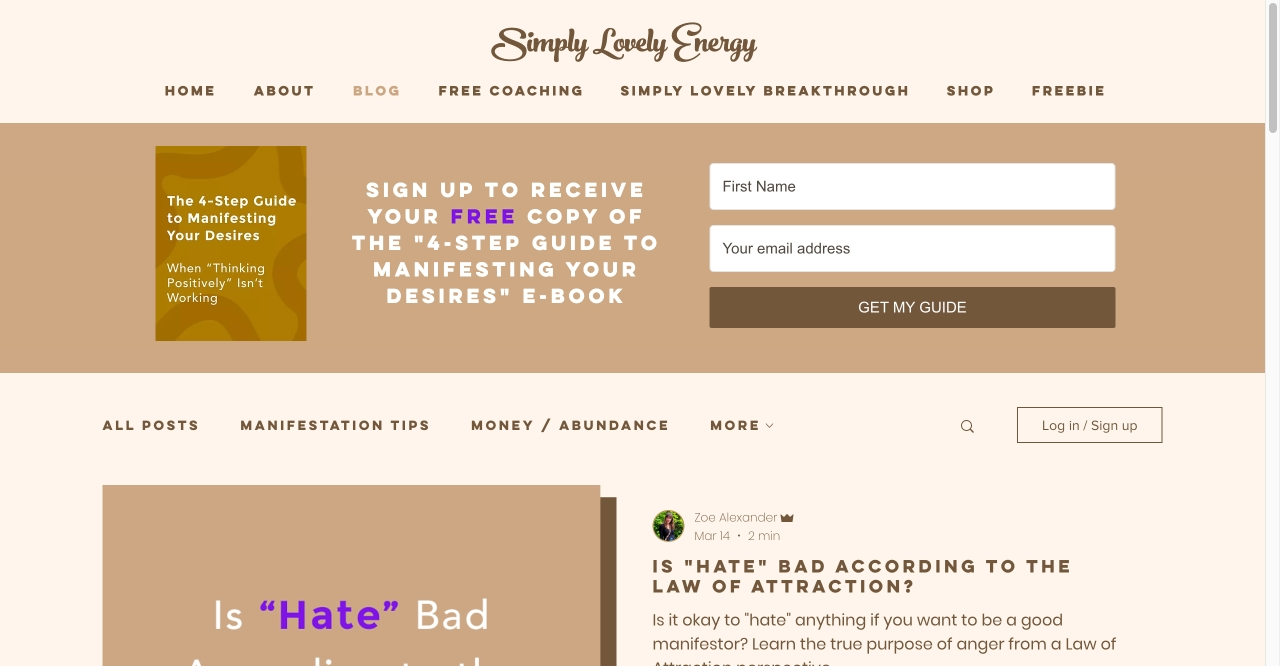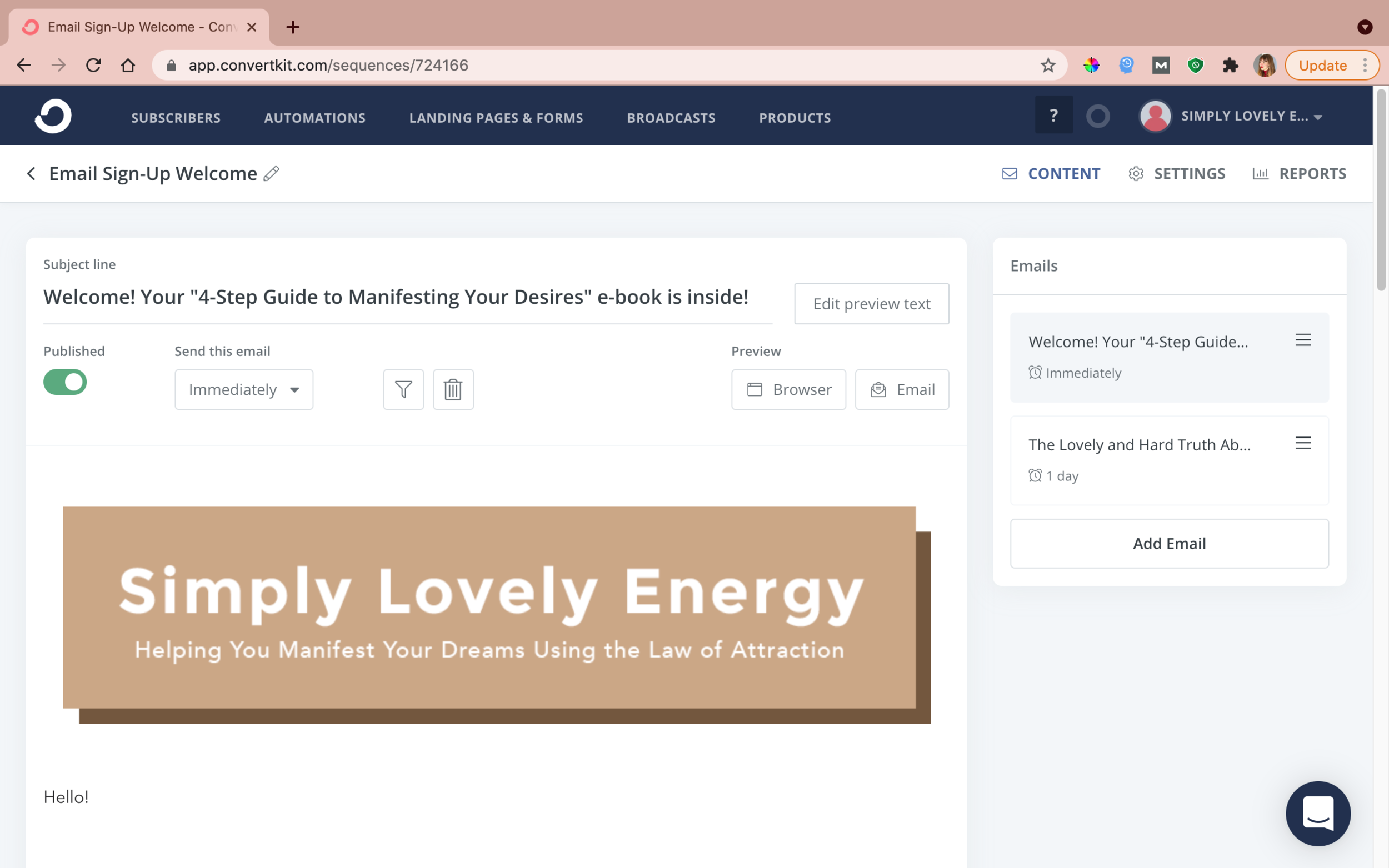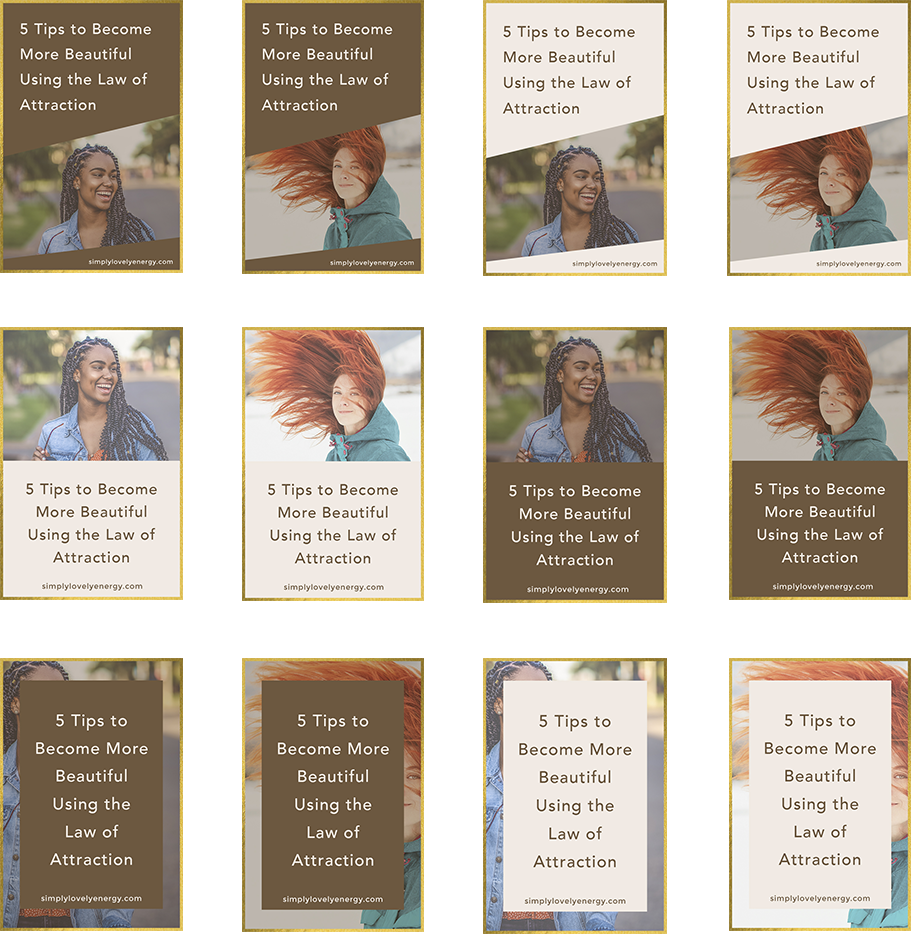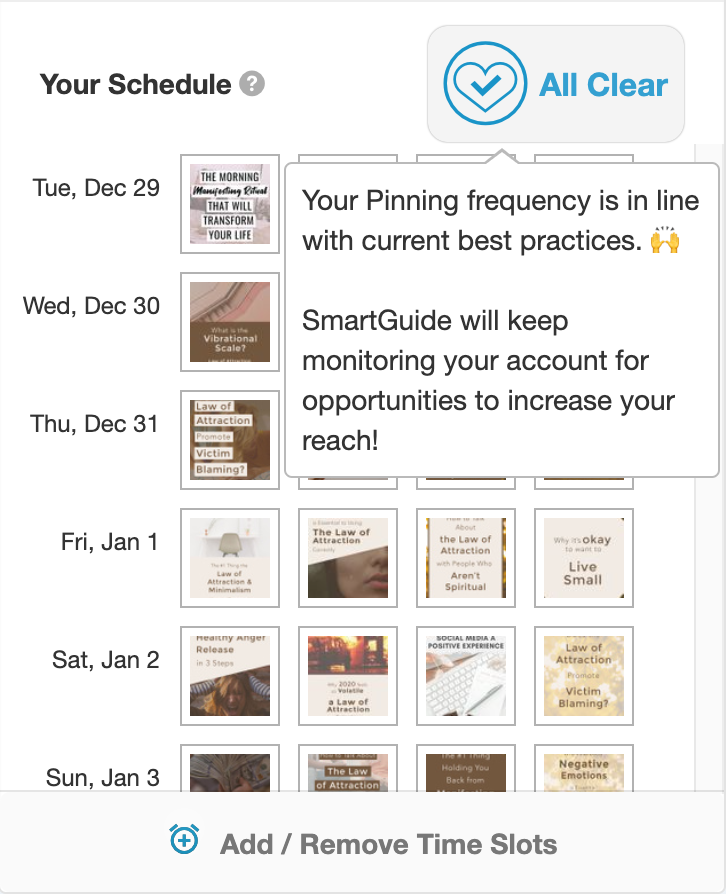Web Design, Marketing
Simply Lovely Energy Life Coaching
Methods Used
Competitor Analysis
Web + Graphic Design
Copywriting + SEO
Pinterest Marketing
Automated Sales Funnels
Tools Used
WiX
Adobe Photoshop
ConvertKit
Tailwind
Pinterest
Products Created
Responsive Website
12 New Pinterest Pins per Week
1 Blog Post per Week
Weekly Email Broadcasts
E-book Freebie

The Project
I needed to create a website and marketing campaign for my new online life coaching business. I already had certification as a Law of Attraction (LoA) life coach, but needed a way to let people know about my services to attract and retain clients.
User Research
As I have studied the personal development field for 5 years, I already had a fair understanding of the pain points of those interested in the Law of Attraction and spiritual life coaching. In addition to listing out the pain points from my own experience, I also analyzed websites from spiritual life coaches in the field and observed what pain points they addressed in their sales copy and marketing.
The main pain point I’ve found for new Law of Attraction practitioners is a concept called “toxic positivity”. The main tenant of Law of Attraction is that “like attracts like”, or that your thoughts create your reality, so new practitioners will erroneously assume that “bad” thoughts create a “bad” reality. Because of this assumption, newbies to LoA will oftentimes gas-light themselves by telling themselves that it’s their fault or that they deserved something bad happening to them for failing to “think positively” enough because they fail to understand that facing and working through their fears (usually called “shadow work” in the spiritual community) is an essential component of creating the life they want.
I thus had the opportunity (and the responsibility) as a spiritual life coach to address this pain point for my future clients in my sales copy and marketing.
Personas
To create a persona, I used the user research I already conducted, mapped my own journey, and analyzed people from a coaching group I am in that is a similar demographic to create a representation of my future clients.
Joan is a woman in her late 20s who is interested in metaphysical spirituality and personal development. Hay House is her favorite publishing company. Despite her more “hippie” interests, she has a upper-middle class lifestyle. Joan has read about the basics of Law of Attraction and resonates with it, but finds most explanations of how LoA works to be lackluster or repetitive. She has a major issue in her life, but she just can’t seem to get herself to feel better about it in order to manifest what she wants. She wishes “The Secret” went into more detail about what to do in this situation.
Website Layout
To determine the structure of the website, I again analyzed other spiritual life coaches’ websites to determine what important elements were needed in my own site.
From this analysis, as well as thinking about my own pain points when navigating coaching websites, I determined that I needed a top navigation bar that featured a homepage, a “start here/about” page, a blog page, a CTA to get free coaching, a coaching page where users could easily sign up and pay for a coaching session, and “freebie” page with a single CTA for users to sign up for the email list.
In deciding what to include on the homepage, it is common on modern coaching websites for the homepage to have different “sections” with separate CTAs to navigate to all the other pages of the site. Because I determined from best marketing practices and other coaches’ webpages that most users will want to read and become familiar with your work before signing up for coaching, I have the homepage CTAs emphasize signing up for the freebie and reading the blog so that users will be led to reading my free materials first.
According to best blogging sales funnels practices, it is crucial to get users to sign up for your email list. In order to encourage users to join the list, I placed a banner with a CTA to sign up for my email list in exchange for a free e-book on top of and at the bottom of every page except for the coaching page (where I want the user’s action to be to sign up for a coaching session instead). In addition, I created a separate “freebie” page that is accessible from the top navigation bar and is a landing page where the sole CTA is to have the user sign up for the emailing list.
Style-wise, I wanted my coaching website to feel “warm” and “inviting”, as well as have uniform branding so that my work would be instantly recognizable. I decided to choose shades of brown as my pain color palette with an accent purple color. To create my website, I used WiX.
Website Copy
Based on best practices in marketing, it was important for me to address the user’s main pain points in my copy and provide the solution. Since my target audience is already knowledgeable in the basics of the Law of Attraction, it was also important for me to lingo specific to this demographic (like “manifest” and “limiting beliefs”) to demonstrate that I am knowledgeable in this field. I also wanted to demonstrate that I am friendly and helpful, so I needed to write simple but thorough explanations.
With these parameters in mind, I decided to directly address on the homepage the pain point users have in that they have some situations where they can’t seem to get what they want, even when using positive thinking. I provided for them the concept of “limiting beliefs” beyond the idea that limiting beliefs = bad, and explained to them in broad terms that being able to be comfortable with unhappy thoughts is the key to be able to work through them. I then link them to the “start here” page and go more into depth on this concept. This then links them to the “blog” page so that they can read more of my work and become fans of what I have to offer.
Every week on Mondays I create a blog post that covers a topic specific to a pain point or confusion users may face when using the Law of Attraction. I structure these posts with titles that explain “how to” do something, include a set number (like the #1 thing you can do…), or explain why something happens/works the way it does because from a blogging/marketing standpoint, these titles are what attract the largest amount of people to read them. I also make sure to include SEO principles by using keywords in my titles and content description to help them place better in Google and Pinterest searches.
The tricky part to balance when creating a service based off of a blog is offering enough free content that is useful to users while still providing incentive for users to buy your services. My strategy (based off of other coaches that I have researched and my own personal coaching skills) in this is to differentiate my services from my free content by stating outright in my copy that the users can work through their limiting beliefs by themselves, but my paid services offer an accelerated way of working through limiting beliefs. I offer reduced time feeling frustrated and ease of working through their problems as my main selling point. I also offer a complimentary session for users to try my services out.
Email Sales Funnel
According to best professional blogging practices, having users subscribe to your email list is the best way to obtain and retain customers and fans. By having them on your email list, it gives you the ability to connect with them whenever you want to by sending out an email, and unlike other social media platforms, if that platform stopped working or froze your account, you still have your email list as a way to connect with customers.
However, users nowadays will not sign up your email list with a CTA of “sign up for my newsletter” because that reads to them as “get more junk in your inbox”. The current best practices are to offer the user something of value in exchange for receiving their email. With this in mind, I created a PDF e-book that is a “4-step guide to manifesting your desires”. I chose this title specifically because it solves the pain point of being unable to manifest your desires, and includes the specific number of steps it takes to do so because users like to know how long or short a piece of content will be. I made sure to include the best and most helpful content I could so that users know the value I have to offer them, and at the end of the e-book included a link to my coaching page so they are reminded or made aware of my coaching services.
When users provide me their email in exchange for the e-book, they get added to an automation sequence (using ConvertKit) in which they receive the e-book the first day and are asked respond in the email about their biggest fears or confusion with the Law of Attraction. This is to demonstrate that I care about my users and want to hear from them and provide an easy way to establish a connection between us. The next day, the user receives an email that goes into my personal backstory on why I started the website and how I intend to help the user use the Law of Attraction to work through their limiting beliefs and manifest what they want.
From then on, every Monday at 7am PST, my users receive an email from me with a link to the latest blog post, and a reminder at the end of the email that they can sign up for a coaching session with me. In the future, I would like to expand my email automation to include a 50% off coupon for the first time the user signs up for my coaching services as incentive for them to work with me.
Pinterest Marketing/Best Practices
To understand Pinterest marketing best practices, I took a Pinterest marketing course specifically designed for bloggers who are looking to monetize their websites.
I learned that while the specific algorithm Pinterest uses to rank pins (images uploaded on Pinterest) is not entirely known, is it known that Pinterest will rank your pins better if you post consistently and post good content that gets saved and clicked on by Pinterest users. They also reward creating multiple graphic image designs for your blog posts instead of re-pinning the same design.
To ensure that I pinned images consistently I decided to used Tailwind, an social media automation platform specifically designed for Pinterest. I have Tailwind post at least 4 pins on my Pinterest account for me automatically every day.
Each time I create my weekly new blog post, I then make 12 graphic image designs for Pinterest using templates I already created in Photoshop.
After creating all 12 new Pinterest images, I upload them to Tailwind, save them to the relevant Pinterest boards, and then random the automated pinning schedule so that they show up on different days at different times to my boards. When uploading the pins I make sure to use keywords according to best SEO practices in my pin titles and pin descriptions.
Within Tailwind, there is a feature called “Communities” in which you can pin within Tailwind’s backend software (it does not display on Pinterest) to different community group boards. From there other businesses can pin your pins to their Pinterest boards and you pin their content to your own, usually in a 1-to-1 ratio (for every pin you upload, you pin someone else’s content).
I joined 4 different community group boards pertaining to Law of Attraction, metaphysics, and holistic health. Every week when I create a new blog post, I pin the new content to each of these group boards, and then analyze which of my pins has been reposted in each group the most to get an understanding of what content users like best. As of writing, the most commonly pinned item I created was about “manifesting money”, which indicates I should write more about the topic in the future.
For the Future
After creating this site and utilizng best marketing techinuqes/UX practices, I realized that I enjoyed the website design more than the coaching aspect, so I have stepped away from this business for now (you can still access the site if you wish).
If I were to continue the coaching practice, my next step would have been to create several evergreen e-courses (a course that a user can purchase at any time they’d like) so that I could increase the profitability of my business as well as provide resources for customers that are looking for information about using the Law of Attraction but do not necessarily want to do 1-on-1 coaching. Ideas at the time included a course on money manifestation and manifesting a relationship.












